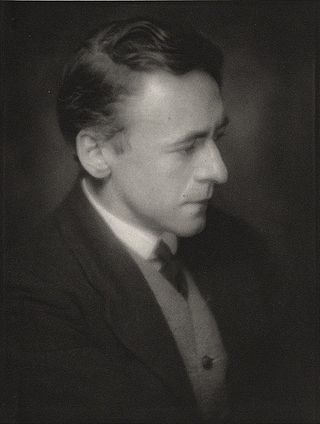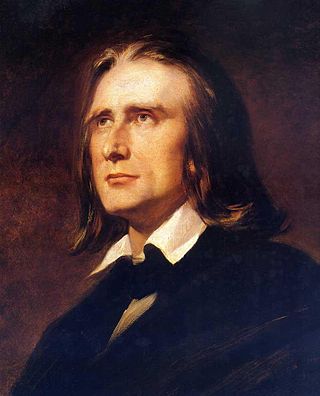History
Bax's brother Clifford was editor of a quarterly magazine, Orpheus, to which the author Herbert Farjeon, better known as a writer of revue sketches and light verse, contributed. Farjeon's short story – he called it a "prose-poem" – "The Happy Forest", was described as a "Nature Poem" and depicted an idyllic rustic scene populated by galant shepherds and a satyr. It inspired Bax to compose a piano piece with the same title. Completed in May 1914, it was dedicated to Farjeon. [1]
After the First World War, Bax orchestrated the piece. His biographer Lewis Foreman comments that neither the serene rural scene nor the music Bax wrote for it could have been conceived after the collective experience of the war, and that Bax, in orchestrating the piece was "revisiting a world beyond recall". [2] The orchestral version was dedicated to and first conducted by Eugene Goossens. The premiere was given at the Queen's Hall in London on 3 July 1923. [3] The piece was given by Sir Henry Wood at the Proms in 1925. [4]

Sir Arnold Edward Trevor Bax was an English composer, poet, and author. His prolific output includes songs, choral music, chamber pieces, and solo piano works, but he is best known for his orchestral music. In addition to a series of symphonic poems, he wrote seven symphonies and was for a time widely regarded as the leading British symphonist.
A symphonic poem or tone poem is a piece of orchestral music, usually in a single continuous movement, which illustrates or evokes the content of a poem, short story, novel, painting, landscape, or other (non-musical) source. The German term Tondichtung appears to have been first used by the composer Carl Loewe in 1828. The Hungarian composer Franz Liszt first applied the term Symphonische Dichtung to his 13 works in this vein, which commenced in 1848.
Program music or programmatic music is a type of instrumental art music that attempts to musically render an extramusical narrative. The narrative itself might be offered to the audience through the piece's title, or in the form of program notes, inviting imaginative correlations with the music. A well-known example is Sergei Prokofiev's Peter and the Wolf.

Frederick Corder was an English composer and music teacher.
Harry Farjeon was a British composer and an influential teacher of harmony and composition at the Royal Academy of Music for more than 45 years.

Tintagel is a symphonic poem by Arnold Bax. It is his best-known work, and was for some years the only piece by which the composer was known to many concert-goers. The work was inspired by a visit Bax made to Tintagel Castle in Cornwall in 1917, and, although not explicitly programmatic, draws on the history and mythology associated with the castle.
The Overture to a Picaresque Comedy is a concert overture composed by Arnold Bax in 1930. It was premiered by the Hallé Orchestra conducted by the dedicatee, Sir Hamilton Harty, in November 1931. The work is untypical of its composer, who was not usually associated with comedy in music.
The Symphony No. 6 by Arnold Bax was completed on February 10, 1935. The symphony is dedicated to Sir Adrian Boult. It is, according to David Parlett, "[Bax's] own favourite and widely regarded as his greatest ... powerful and tightly controlled". It was given its world premiere by the Royal Philharmonic on November 21 of the year of composition, 1935.
The Symphony No. 3 by Arnold Bax was completed in 1929. It was dedicated to Sir Henry Wood and is perhaps the most performed and most immediately approachable of Bax's symphonies.
November Woods is a tone poem by Arnold Bax, written in 1917. Ostensibly a musical depiction of nature, the work conveys something of the composer's turbulent emotional state arising from the disintegration of his marriage and his love affair with the pianist Harriet Cohen. According to the composer, the piece is not programmatic, but evokes mood rather than painting a picture or telling a story.

The symphonic poems of the Hungarian composer Franz Liszt are a series of 13 orchestral works, numbered S.95–107. The first 12 were composed between 1848 and 1858 ; the last, Von der Wiege bis zum Grabe, followed in 1882. These works helped establish the genre of orchestral program music—compositions written to illustrate an extra-musical plan derived from a play, poem, painting or work of nature. They inspired the symphonic poems of Bedřich Smetana, Antonín Dvořák, Richard Strauss and others.

Robert Watson Hughes AO MBE was a Scottish-born Australian composer. His melodies are driven by short motives and unrelenting ostinato figures.
Rumon Gamba is a British conductor.
Arnold Bax composed his Piano Sonata in E-flat in 1921. It is the original version of Bax's First Symphony and was not performed in public or published in the composer's lifetime.
The orchestral song is a late romantic genre of classical music for solo voices and orchestra.
This is a summary of 1927 in music in the United Kingdom.
The Garden of Fand (1916) is a tone poem by the English composer Arnold Bax. It was inspired by an Irish mythical figure, Fand, the daughter of the lord of the ocean. The work does not portray the events of the mythical tale, but evokes Fand's island. The composer had been greatly influenced by Celtic culture in his earlier works, but described this one as his last in that vein.
In the Faëry Hills, to which the composer gave the alternative Irish title An Suagh Sidhe, is a symphonic poem by Arnold Bax. It was composed in 1909 and was premiered in London in 1910. It is the second of three works that make up a trilogy of symphonic poems with the collective title Eire. The inspiration for the piece was The Wanderings of Oisin by the poet W. B. Yeats, whom Bax greatly admired.
This page is based on this
Wikipedia article Text is available under the
CC BY-SA 4.0 license; additional terms may apply.
Images, videos and audio are available under their respective licenses.




